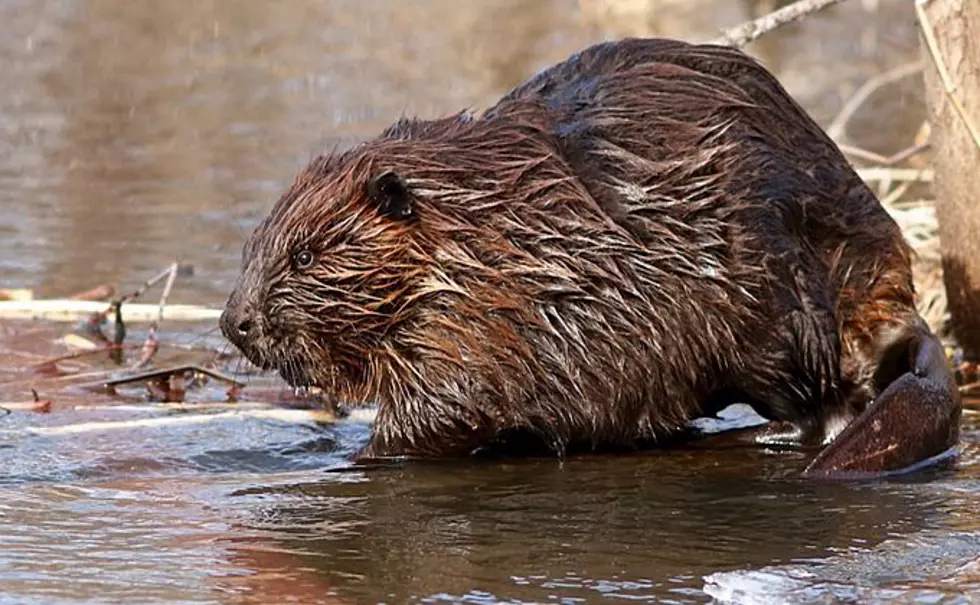
Scientists propose ambitious West-wide rewilding plan involving wolves, beaver
Laura Lundquist/Missoula Current
Twenty wildlife and public lands professionals are proposing a plan to “rewild” public lands in the West to preserve threatened fish and wildlife and help people survive in the face of worsening climate change. But even the professionals admit the plan is controversial.
The proposal lays out three courses of action: remove livestock from public lands through the retirement of grazing allotments; restore gray wolves; and restore beaver, in that order. The scientists, who represent several universities, detailed their plan in a Viewpoint article titled “Rewilding the American West” published Tuesday in the research journal “BioScience.”
The lead author of the Viewpoint is William Ripple, an ecology professor at Oregon State University who studies the role of wolves in ecosystems among other things. Also included are Michael Phillips, biologist at the Turner Ranch in Montana who was also a state Legislator, and Daniel Ashe, former U.S. Fish and Wildlife Service director.
The authors say these three steps would contribute greatly to restoring critical ecological processes that could help wild areas better withstand the drought and floods and reduce the risk of wildfire associated with our warming atmosphere. They add it could help the Biden administration’s 30 By 30 initiative, which seeks to protect 30% of U.S. land and coastal seas by 2030.
“While most people know what a beaver or a wolf is, they may not understand their critical ecological roles and the ecosystem services they provide. By simply letting beavers and wolves do what they evolved to do, they can restore ecological integrity to an entire landscape,” said Joanna Lambert, environmental studies professor at University of Colorado – Boulder and co-author.
Gray wolves can create a more balanced ecosystem by limiting populations of ungulates that can overgraze plant species, including aspen. They influence other species too, such as allowing foxes to return to areas where coyotes had driven them out.
Beavers help ecosystems store more water by building dams that not only create above-ground pond habitat for numerous species but also help more water seep underground. Many water districts, having recognized the value of beaver dams, now try to recreate them to keep valuable water that used to stream out of valleys, leaving them parched in late summer.
“Beyond concerns for human survival and flourishing, a principled commitment to the natural world and a sense of moral urgency underpins the motivation for our proposal,” the authors wrote.
To develop their plan, the authors started by identifying all the possible wolf habitat in 11 Western states. Wolves have large territories, so their habitat would identify large conservation areas. The authors dubbed the resulting 11 reserves “the Western Rewilding Network.” Then they delineated all the connectivity areas in between.
When they overlaid the habitat of threatened and endangered species, they found 92 species that could be conserved in the Rewilding Network. Of those, almost half are threatened by damage to habitat caused by livestock grazing. Livestock can overgraze areas, trample wetland and riparian areas and lead to human-predator conflict. Mining and logging each affect about 20% of species, and oil and gas drilling threatens about 10%.
The authors note that rewilding will be most effective when it considers the concerns of all stakeholders, including livestock ranchers, local communities, hunters and fishers, recreationists, state and local governments, nonprofit organizations, and other private landowners
The authors acknowledge that eliminating livestock within the Western Rewilding Network would affect about 30% of federal land grazing allotments, which is likely to be unpopular. Therefore, they propose creating an “economically and socially just federal compensation program for those who relinquish their government grazing permits,” provided the retirements are permanent. They also highlight the need for conflict management plans for situations where wolves or beavers move out of the Rewilding Network.
Finally, after the past year or so when controversies regarding wolves have once again heated up, they call for the restoration of federal protections for wolves.
“Although our proposal may at first blush appear controversial, we believe that ultra ambitious action is required,” the authors wrote.
It’s not likely to go over well with some Montanans, particularly ranchers. The Montana Stock Growers Association is backing a Congressional bill that would not only make it easier to get federal grazing permits and extend the permit duration to 20 years but also allow for the temporary utilization of vacant grazing allotments during extreme events or natural disasters.
“Public land grazing is critical to Montana ranching families and ranching operations across the West,” said MSGA president Jim Steinbeisser in a release. “Finding opportunities for efficiencies as it pertains to grazing permits and renewals is a step in the right direction to lowering the burden for grazing permittees, who diligently preserve and protect the rangelands of Montana.”
On Tuesday, environmental groups – Western Watersheds Project, Center for Biological Diversity, Wolf Conservation Center and Earthjustice - stressed the need for such a plan.
“The colliding extinction crisis and the climate emergency demand bold action. With logging, mining, oil and gas drilling, and livestock grazing remaining a significant threat to federal public lands, we must stop this endless resource exploitation and start conserving, reconnecting, and restoring at a landscape scale,” said Sarah McMillan, Senior Adviser at WildEarth Guardians. “The ecological and economic benefits of the rewilding plan presented in this paper would be significant, and would accumulate over time, as riparian areas, clean water, and biodiversity are restored and climate change is mitigated through increased carbon storage."
Contact reporter Laura Lundquist at lundquist@missoulacurrent.com.
